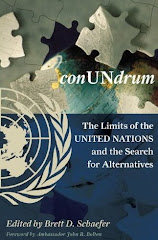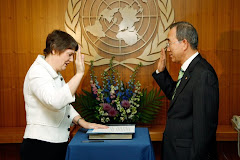
Turning to the sun for energy helps to reduce greenhouse gas emissions
The UN Environment Programme (UNEP), UN Human Settlements Programme (UN-HABITAT) and the World Bank jointly launched the Global Greenhouse Gas Standard for cities at the World Urban Forum in Rio de Janeiro.
While measurement should not delay action, a critical requirement to support policy and access to finance is the establishment of an open, global and harmonized protocol for quantifying the GHG emissions attributable to cities and local regions, UNEP, UN-HABITAT and the World Bank said in a jointly issued press release.
The Greenhouse Gas Standard calculates emissions on a per capita basis. For example, greenhouse gas emissions are 4.20 tons of carbon dioxide per capita in Barcelona, Spain, 10.6 in Bangkok, Thailand, and 17.8 in Calgary, Canada.
The new common standard also takes into account cities’ primary energy sources, climate, means of transportation and urban form. As a result, a high-density city like New York produces 10.4 tons per capita, while another United States city, Denver, emits 21.3 tons per capita.
The new common standard also allows cities to compare their emissions over time, across cities and in specific sectors such as energy, transportation or waste.
At today’s launch, the organizers stressed that city mayors and other urban leaders, business and civil society recognize the need to act to reduce climate change in cities.
“In reducing greenhouse gas emissions, cities are part of the solution: city officials are discovering new ways to get people out of cars and into rapid transit buses; to harness the methane released by landfills and turn it into energy; to support compact urban development and not urban sprawl,” said Anna Tibaijuka, Under-Secretary-General and Executive Director of UN-HABITAT.
Officials also stressed that cities can be the key catalyst towards the international aim of keeping a global temperature rise to less than 2 degrees Celsius.
“The Copenhagen Accord, for which 110 countries representing over 80 per cent of global emissions have expressed support, remains a work in progress. There remains an ambition gap between where we are and where we need to be in 2020 – bigger cuts by cities may be one route towards bridging this divide,” said Achim Steiner, Under-Secretary-General and UNEP Executive Director.
Secretary-General Ban Ki-moon said last week that the UN Framework Convention on Climate Change (UNFCCC) will continue to spearhead international negotiations on climate change ahead of the Cancun summit in November, where participants will be aiming to reach a global, binding deal on climate change.
















































No comments:
Post a Comment